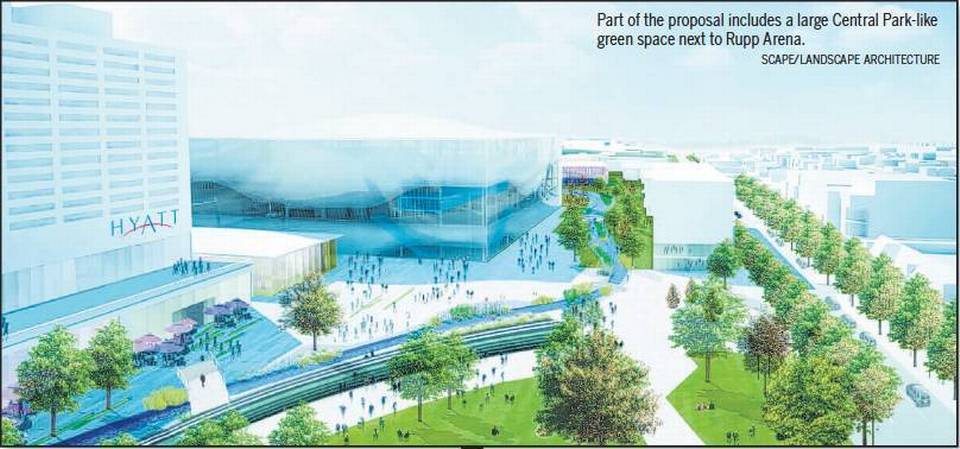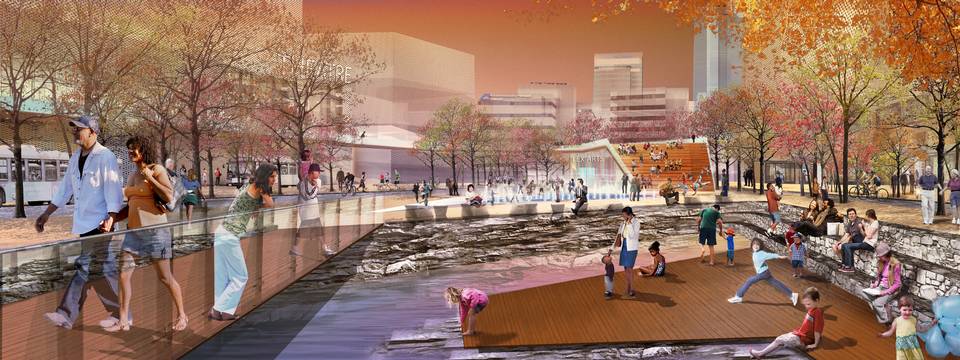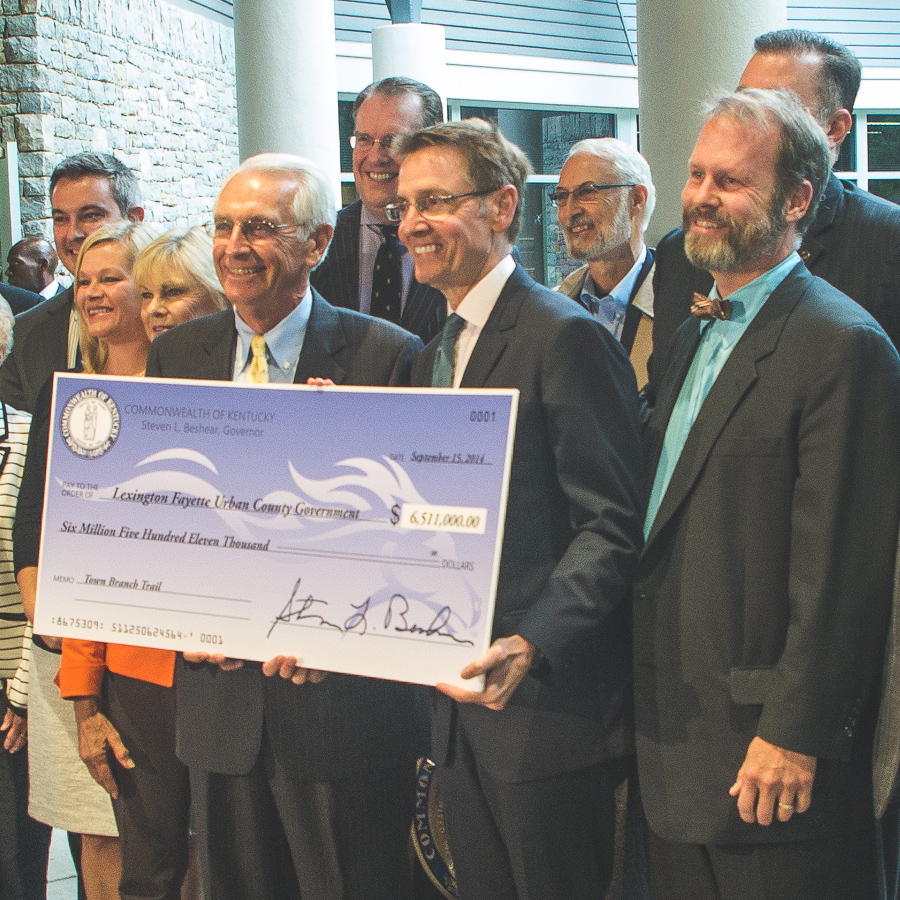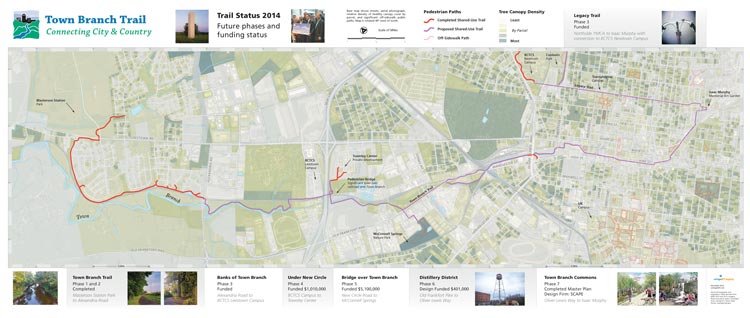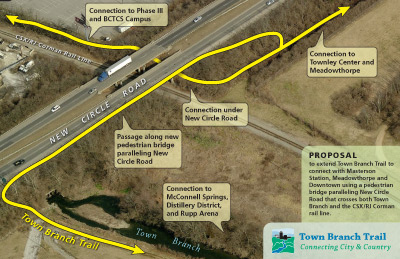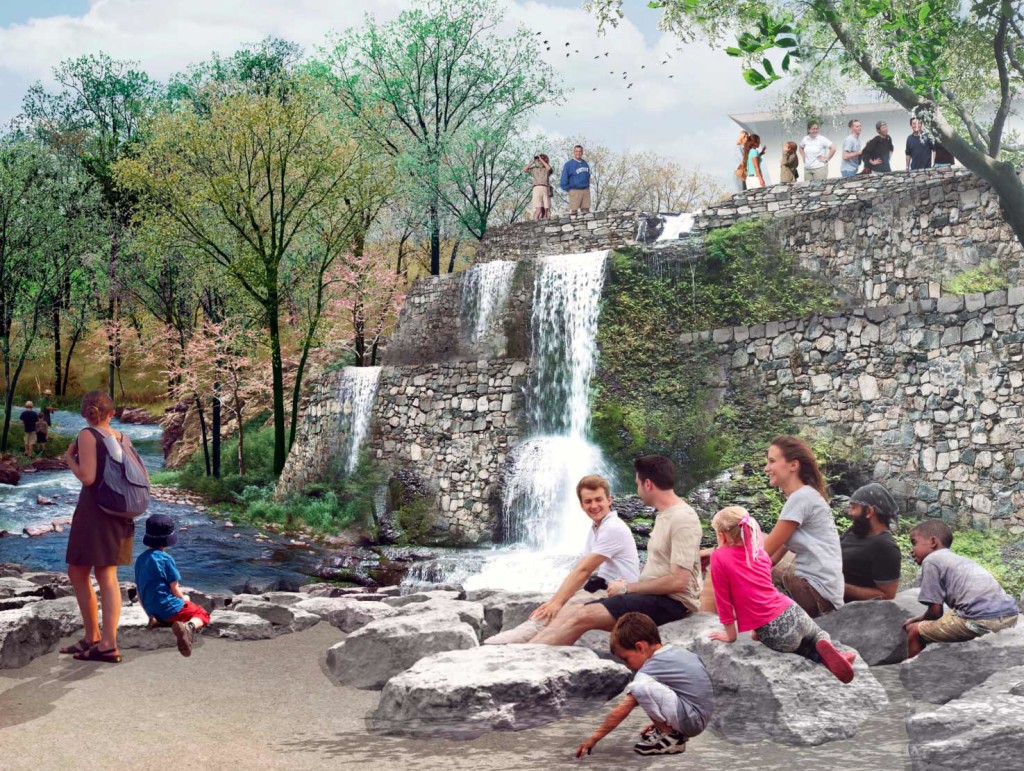Building and maintaining a linear park through downtown Lexington could cost upwards of $75 million, city officials told the Urban County Council on Tuesday.
But only $10 million would be city money, they said.
Town Branch Commons, a 2.5-mile linear park with a network of pools, fountains, rain gardens and pocket parks stretching from Isaac Murphy Memorial Art Garden to Cox Street would be funded through a combination of private, local and federal money, said Jeff Fugate, president and COO of the Lexington Downtown Development Authority, which has spearheaded efforts to create the park since 2013.

This illustration shows the proposed Town Branch Park, part of the presentation on the new Town Branch trail. The Council will hear more Tuesday May 19, 2015 about a proposal for a new linear downtown park that will connect the city’s two main trail systems. The city is applying for a $13 million federal transportation grant and Mayor Jim Gray is asking for $10 million for the project in his proposed city budget. Image: MIR,NBBJ, SCAPE/Landscape Architecture MIR,NBBJ, SCAPE/Landscape Architecture
That $75 million includes a little more than $24 million for infrastructure. A tentative target of $30 million has been set to establish parks along the path of Town Branch, the stream that runs mostly under downtown but would be raised to the surface.
About $8 million would be needed to operate the system for 10 years after it is completed.
An additional $12 million is for an operating endowment, which would generate $500,000 to $1 million a year for operating expenses beyond the first 10 years. It would be maintained by a nonprofit organization.
It’s an ambitious plan, Mayor Jim Gray said in an interview last week. But Town Branch Commons could transform the city for generations, he said.
“Quality of life is so important to our economic future,” he said. “Cities are competing for jobs. And quality of life and quality of place are key criteria in attracting jobs.”
Plans for Town Branch Commons were unveiled in 2013 but were put on hold while the city pursued a major overhaul of Rupp Arena and the attached convention center.
With Rupp Arena plans stalled, the city is turning its focus to Town Branch Commons.
The city has completed a pre-application for more than $13 million in federal transportation grant funding. The final application is due June 3. Gray has set aside $10 million in his proposed budget for the fiscal year that begins July 1. Lextran has agreed to put in a little less than $1 million.
The council agreed by voice vote during Tuesday’s meeting to ask the city’s law department to prepare a resolution supporting the application for the federal transportation grant.
The first $24 million would go toward building infrastructure, which would include bike lanes and trails that would connect downtown to the Legacy and Town Branch trails, said Jamie Emmons, Gray’s chief of staff.
“The second phase of funding would be privately funded,” Emmons said.
Fugate said an ad hoc committee had been meeting to work on details.
The Bluegrass Community Development Foundation has agreed to help with fund raising, Fugate said.
The design from Scape/Landscape Architecture of New York calls for a large Central Park-like park on the Cox Street lot west of Rupp Arena, a linear park in the Vine Street parking lot behind city hall, and other improvements to existing parks along the trail, including Triangle and Thoroughbred parks.

